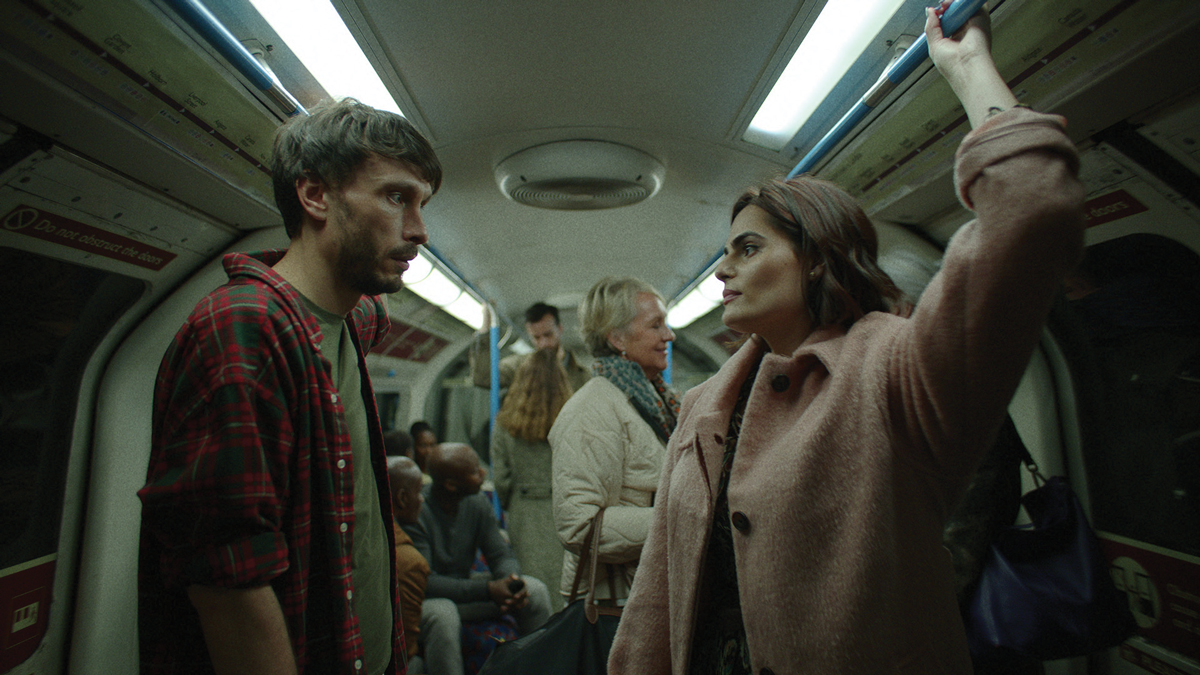
Centre stage: Baby Reindeer
Posted on Jul 23, 2024 by Katie Kasperson
Richard Gadd’s autobiographical limited series Baby Reindeer sees a fictional Donny Dunn desperate for a career in the limelight amid a severe case of stalking. DOP Krzysztof Trojnar explains how he kept Donny’s story at the centre
Created by writer-comedian Richard Gadd, Baby Reindeer is a part drama, part black comedy based on Gadd’s own experience with a stalker, fictionalised as Martha Scott (played by Jessica Gunning, with Gadd as protagonist Donny Dunn). Aligned with Donny’s struggles as an aspiring stand-up comedian, the series keeps him in the (sometimes literal) spotlight, employing a number of unique lensing and lighting techniques to do so.
Stuck in the middle
Acting as cinematographer on the first four episodes, Krzysztof Trojnar established the show’s visual tone with director Weronika Tofilska – an old friend from film school. “When I read the script, I couldn’t believe what I was reading,” Trojnar admits. “It was so engaging; you’re immediately in this world, and Martha is such an unusual character.”
Adapted from Gadd’s one-man show of the same name, Baby Reindeer is largely told in the first person, with Donny narrating the story – one that’s deeply subjective yet universal, that comments on human flaws and the price of fame – as it unfolds. “It was always his story,” states Trojnar. “The camera was always close to him, and we knew from the start it was going to be his point of view – not literally, but in the way we portray him.”
He and Tofilska agreed that they didn’t want to feel detached from Donny’s story. “It was all about being with the character and feeling the intensity,” Trojnar reflects. To that end, he opted for wide lenses – specifically ARRI Rental’s DNA lenses. “They have this great characteristic where they lose the resolution towards the edge of the screen. This worked perfectly with the idea that Donny is in the middle of the story. There are always central compositions, as he talks about being the centre of attention.
“We predominantly shot the show on 35mm large format – so a little bit wider than traditional 35mm work – but that was the main lens of choice,” Trojnar continues. “Depending how the scene felt or what kind of emotion we were trying to evoke, we would go wider if needed.” For instance, in episode 4, which centres around Donny’s abusive relationship with a man named Darrien O’Connor, Trojnar wanted Darrien’s flat to appear distorted and feel like an ‘unsettling and uncomfortable place’.
All of the lights
Episode 4 is a harrowing watch, portraying a series of sexual assaults initiated by Darrien, a successful TV writer whom Donny meets while attending the Edinburgh Fringe. The show hired both an intimacy coordinator and an on-set psychologist to maintain a safe space and provide support. “We would rehearse everything with stand-ins so that we would never overdo anything – unless the actors wanted to do it,” recalls Trojnar. When it came time to film, “we were 40 days in, and I think everyone knew each other on a human level,” alleviating some of the unease.
To shoot these scenes, the crew built Darrien’s flat from scratch, installing a removable ceiling that swapped as a lighting rig. “There were so many technical elements of us wanting to put the camera in certain places,” begins Trojnar, particularly in the sequences when Donny takes LSD. “When Donny is high in Darrien’s flat, there was this idea of the streetlight suddenly becoming the spotlight and the drugs enhancing it. Initially, we projected a warm light into the apartment, but when he gets high, we see it in a more pronounced way. We swapped our source with this super concentrated beam of light; it would hit Donny and then bounce back to the ceiling and create this dramatic face when he’s lit.”
According to Trojnar, “the idea of the spotlight was motivated by the script. It came from this idea that Donny is this struggling comedian metaphorically looking for the spotlight and needing it to fulfil his desire or vision of himself.” Throughout the series, Donny enables Martha’s stalking, begging others to suggest he enjoys the attention while also experiencing a sense of guilt and responsibility towards her. “The spotlight is a perfect metaphor,” continues Trojnar. “It’s playing in different moments – like at the comedy club. In comedy clubs, you rarely get a spotlight, but for the story, it made sense.”
In the stand-up scenes, Trojnar wanted to use practical lighting sources, citing Joker as a visual inspiration. He also nods to Fight Club; “it has a first-person point of view,” he explains. “Fight Club had incredible textures of urban grittiness that I loved. It was definitely a reference.”
In the end
Being Trojnar’s first narrative project, the extent of Baby Reindeer’s runaway success came as a surprise. “We always thought it would be far more of a niche show. We never thought it would end up being watched by so many people,” he beams. “I remember watching it for the first time, fully finished, in a cast and crew screening, and it was incredible how all the elements came together. It was satisfying to see it work out in the end.”
Baby Reindeer is out now, streaming on Netflix.
This feature was first published in the August 2024 issue of Definition.













